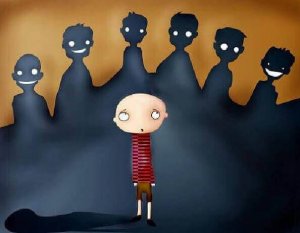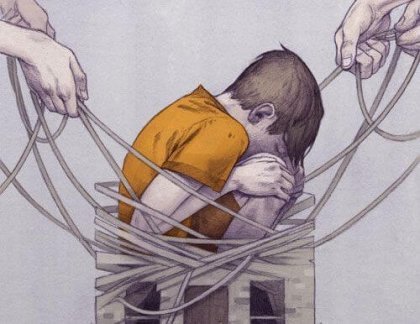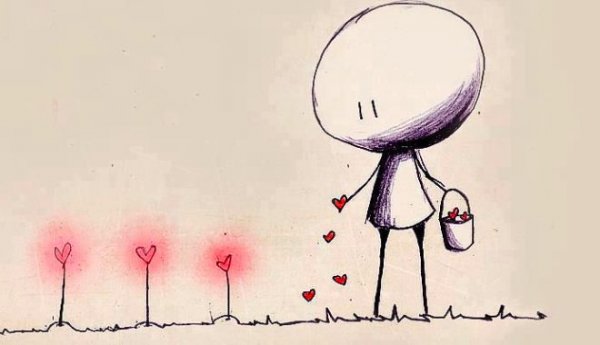The Emotional Wound of Bullying in the Victim and Their Family


Written and verified by the psychologist Raquel Aldana
The following text tries to express the suffering of a child who’s a victim of bullying. It shows that anguish consumes people and also shows the most immediate consequences of this torment.
“We don’t know what’s wrong, he’s constantly complaining of stomach and headaches. He doesn’t fall asleep like he used to, he wakes up distressed at night and climbs in our bed. We can see that he’s worrying about things that didn’t even interest him before.
He has sudden mood changes. One moment, he seems to be at peace and the next he gets very mad or starts sobbing uncontrollably. Sometimes, he even behaves rebelliously when we tell him to stop biting his nails or pulling his hair, behaviors that we haven’t seen in him before.
Something is bothering him, but we don’t know what it is because he won’t talk to us. We suspect that something is happening at school. Maybe he has too much pressure or maybe a kid is giving him a hard time. We keep digging into his environment. We’ve even asked his teacher, his brothers, his friends’ parents. But nobody tells us anything.
Sometimes, he gets very cuddly and, although he’s an affective child, his dependency is worrisome. Sometimes, he demands our attention in an unmeasurable way. Since we don’t know the origin of these changes, we try to talk to him and understand what’s happening.
Sometimes he shuts out and says that he doesn’t want to talk, that he’s embarrassed. But other times he tells us that he doesn’t want to go to school, that something bad is happening. He finally reveals that kids at school are messing with him, that some kids have insulted him and others have even beaten him up.
Our world falls apart. We’ve just named the source of his pain, his anguish, and his discomfort. It’s bullying.
We take the first step immediately: we talk to the school. They have to solve this. These children need to face the consequences of their actions. Our child can’t go through this again. Not ours, not any other child.
It’s time to organize our ideas and see what we can do, how we can act. When this happens, it’s difficult not to insult the bullies and their families. However, we know that it’s best for our kid to avoid being a part of conflicts and direct confrontations.
Therefore, right now we wait and temper our uncontrolled emotions. These bubbling feelings don’t let us think clearly, but taking some time and avoiding the situation must appease them.

The most important thing is to create a safe environment for our child. We’re already working on that, we’re doing everything we can. The school is taking action. Teachers and friends are going to be aware of every movement and every gesture that the bullies make towards our son.
However, this isn’t all. The emotional wound that bullying provoked in our child is still there. Even though he already told us, he’s still afraid and anguished. He refuses to go to school. What can we do?”
Help a child handle the emotional wound of bullying
Helping a child who’s been a victim of bullying to handle the emotional wound that the abuse has generated isn’t easy for families.
- Establish a safe space and a trustworthy environment. It’s essential to reassure them that the people around them will make sure nothing happens. Tell them that their environment is on their side and that the aggressors will have to face the consequences of their behavior. Even though it may be hard, parents must avoid overprotecting their child since it can cause negative consequences.
NOTE: Even if the school establishes the necessary controls to avoid bullying, the child’s refusal to go to school may persist. For this reason, it’s important to let them know that the environment is safe, that going to school is positive, and that going back to their classes will help them feel better little by little. We can facilitate the process of reincorporation by slowly exposing the child to the school environment by having meetings with friends, walking near the school or even reincorporating for a few hours at a time until the child understands that there’s no danger.

- Talk to the child clearly about their suffering. Discomfort has to be named and the child may not be able to verbalize their feelings of anxiety, sadness, or anger. Emotional awareness is the first step the child should take to be able to elaborate on what’s happening or has happened to them. Use terms are appropriate for their age and level of development to help them understand. Do all of this without pressuring them and without making them feel responsible for what they’re feeling.
- Teach them relaxation techniques and other emotional relief resources. It’s essential that the child develops resources that allow them to relieve tension. Relaxation will help calm any physiological tension they might be experiencing and the emotions that invade them. This will allow them to organize their mind and think about comforting and positive things.
- Fill their days with positive experiences. This will allow them to counteract the suffering generated by the complicated situations they experienced. These moments are very powerful and will help the child attract comfortable thoughts and memories that allow them to substitute those that generate discomfort.
- Establish an action plan for possible future conflict situations. We can talk to them about how to act in a situation where they feel threatened. Be careful to not use terminology or expressions that denigrate their past, present, or future actions.

- Reinforce their social skills. The child should be trained in conflict management skills as a foundation for their behavioral strength. Assertive communication is the best way to solve conflict situations. Hence, this may keep the child from “turning small” in the presence of others and help them know how to make favorable decisions without shutting down.
- Talk about the importance of asking for help. Asking for help doesn’t make you weak or less capable socially and personally. It’s important to convey this message to the child, whether or not they’ve been a victim of harassment.
- Reinforce their self-esteem in a parallel and constant way. Victims of bullying have been stripped away from their identities. For this reason, it’s important to reinforce the conception they have of themselves daily without falling into excessive praise.
As you may have seen, children and families who are victims of bullying suffer greatly. Therefore, it’s essential for the people around these families to show understanding and empathize with the pain that this situation generates. It’s equally essential to educate children in values of respect and “zero tolerance” to violence and cruelty. Certainly, the best way to do this is by talking about it with them from a young age and setting an example.
This text is provided for informational purposes only and does not replace consultation with a professional. If in doubt, consult your specialist.








